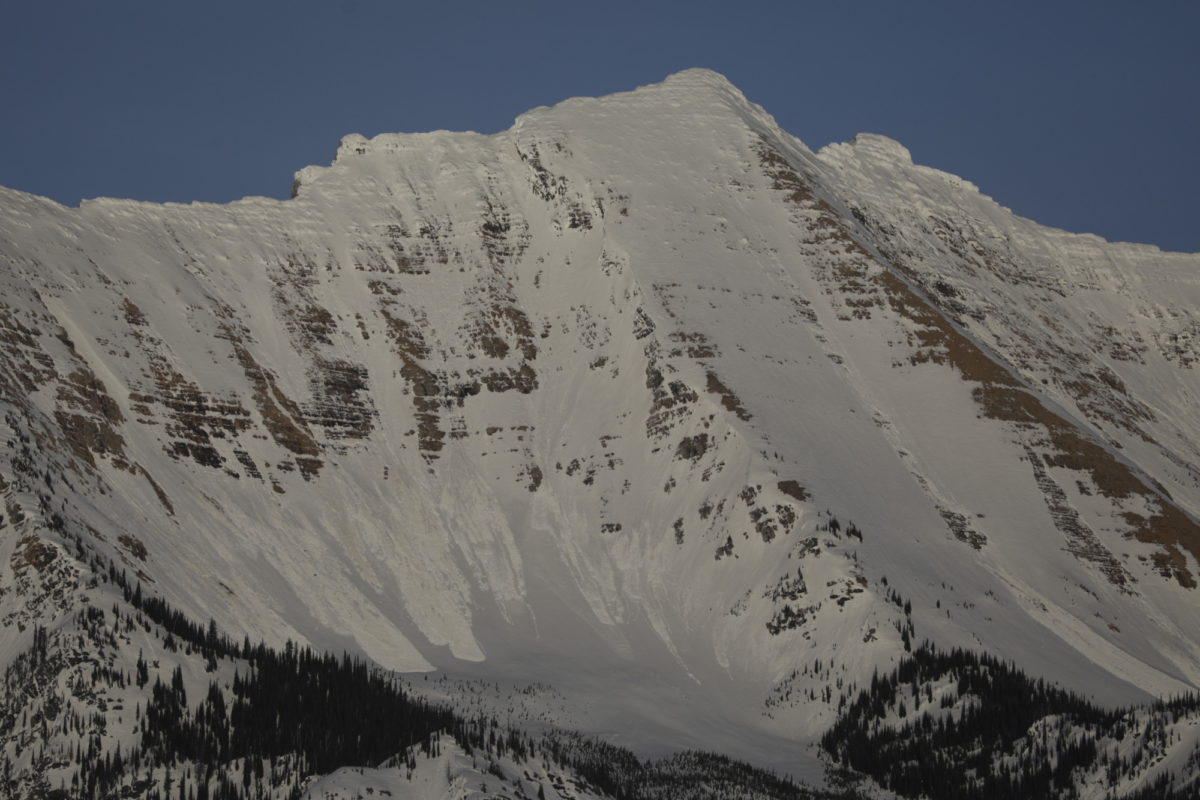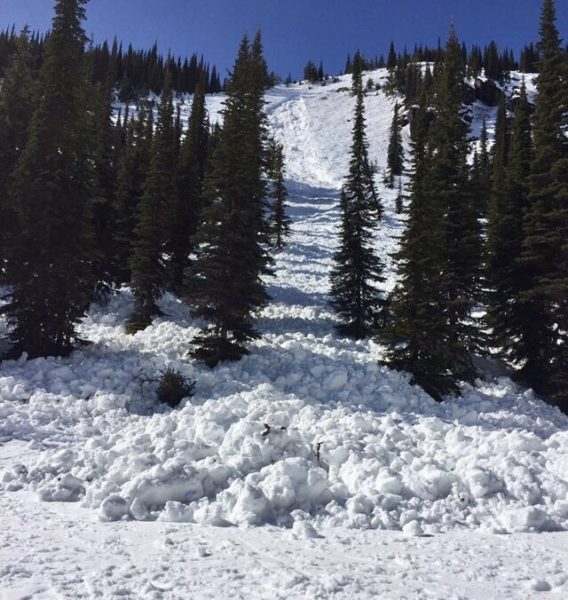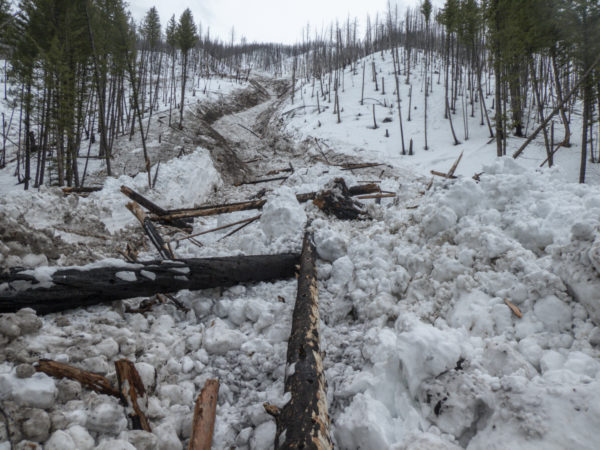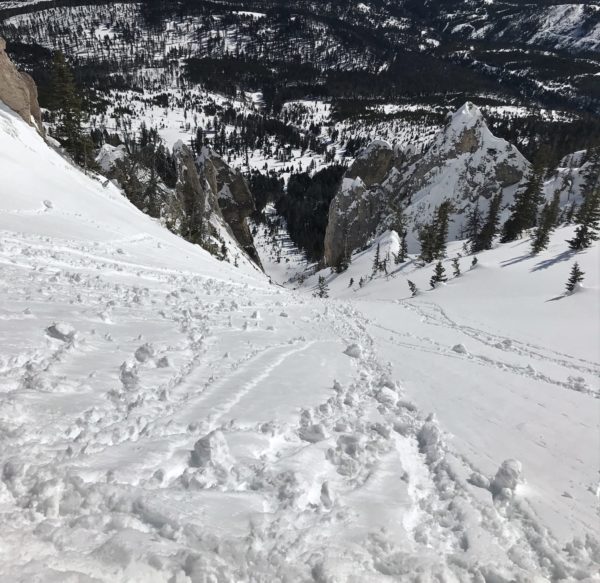Release of unconsolidated damp or wet snow.
Wet Loose instabilities develop as sunshine, warming temperatures, and/or rain-on-snow wet and weaken the snow surface, causing it to lose cohesion. They may gouge deeper into a saturated snowpack. Like Dry Loose avalanches, they start at a point and entrain more snow as they fan out and move downhill. However, the Wet Loose avalanches entrain heavier snow that is more difficult to manage or escape from, and in some cases, can entrain enough mass to cause significant damage to trees, cars, and buildings. Wet Loose avalanches can also trigger larger slab avalanches that break into deeper snow layers. The best way to manage Wet Loose avalanches is to travel when the snow surface is colder and stronger. Time your trips to avoid crossing on or under very steep slopes in the heat of the day. Move to colder, shadier aspects or off of rain-soaked slopes before the snow surface turns slushy. Rollerballs and pinwheels are obvious precursors to Wet Loose avalanches.

Several Wet Loose avalanches triggered naturally by solar warming. Credit: Crested Butte Avalanche Center
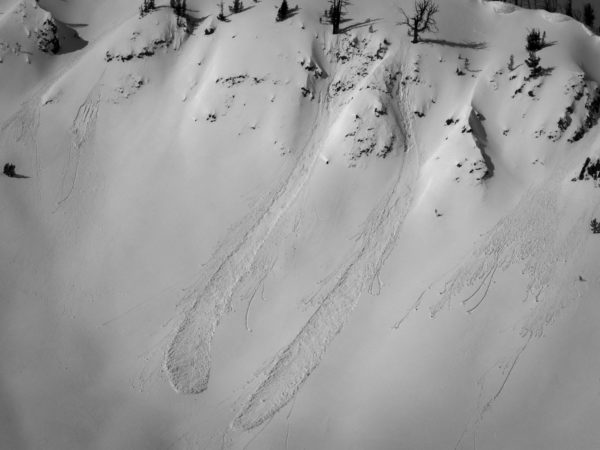
Wet Loose avalanches often initiate from very steep and rocky terrain, where solar warming is most pronounced and where slope angles are sufficient for gathering momentum. Credit: Sawtooth Avalanche Center
